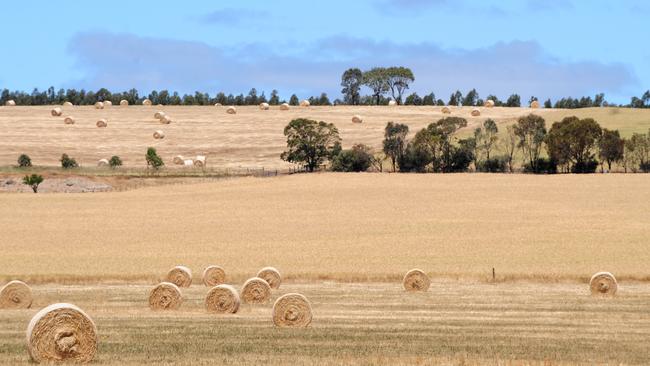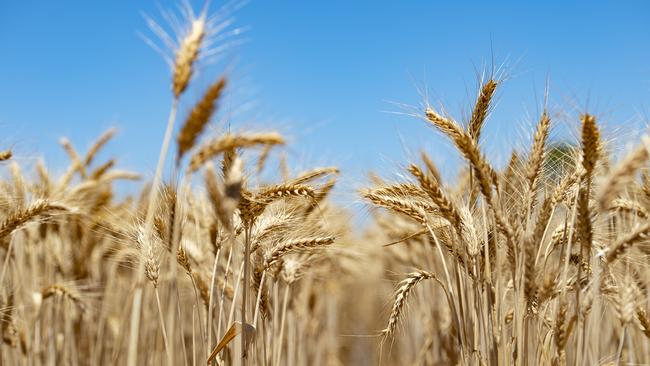Deluge spurs hay buying, while wheat prices soften
Buyers are in the market for hay, and while canola prices are back up, see why coarse grain prices continue to ease.

There’s been a kick in the hay market and many farmers across southern Victoria are buying.
A key source of demand in the past two weeks has been central and east Gippsland.
Cold fronts delivered big rainfall to the region in the middle of June and monthly totals for Bairnsdale, Yarram and Morwell are at least 116mm. The rainfall year to date for this region is already sitting on decile eight to nine.
As Bairnsdale’s decile 5 rainfall for June is 42mm, this month’s falls are between two and three times the average.
Not surprisingly, the soil moisture levels at Longwarry, Yarram and Bairnsdale, as modelled by the Bureau of Meteorology, are all sitting at 100 per cent.
Similar wet conditions with saturated soils are present across the southern coast of Victoria including those paddocks between Cobden and Simpson.
This cold and wet weather has dairy and beef producers hunting for some extra feed.
Paddocks are wet and vulnerable and hay carted into Gippsland enables producers to feed stock in a containment area and avoid heavy stock traffic on wet lower-lying paddocks.
Cereal hay of average quality for the season has been bought to meet this need.
Although most of the hay baled last spring was rain-damaged, it is still providing value to buyers this winter.
Oaten hay testing 9.5 units of ME and 6 per cent protein with signs of black spot on the leaves and stems has been selling at $130 a tonne ex northern Victorian farm.
Hay demand along the South Australian border started earlier in May and is continuing.
If the early signs of the climate scientist are correct, the wet conditions may persist into July and August.
According to Agriculture Victoria, trade winds and subsea temperatures off Sumatra are indicating a start to a negative Indian Ocean Dipole which has been associated with wetter Victorian weather in the past.
Growers are feeling more confident with this month’s rain.
Falls have been above average in all areas, with the exception of a small area of the western Mallee.
Because of this confidence, crops are being top-dressed with urea and other fertilisers.
The improved moisture status for developing hay crops is just what growers are looking for. July and August are important months for crop development.
These months can establish vetch and cereal crops so they can generate the bulk of the biomass in September in readiness for cutting in October.
TIMELY RAINFALL IN US, RUSSIA PUTS SQUEEZE ON WHEAT PRICES
All indicators point to adequate world grain supplies for new-crop production and prices have continued the same softer trend in the past six weeks.
Rain has fallen in critical wheat-production regions of the US and Russia and the trader longs of futures markets have continued their selling, pushing the contracts for nearby delivery down $10.60 a tonne on the Paris exchange and $12.50 a tonne in Chicago.
Global markets are sensitive to crop estimates at this stage of the season as most winter crops are at grain fill and most summer crops have just been planted.
Last week’s grain supply and demand estimates from the International Grains Council based in London confirm grain production is rising.
World wheat and coarse grain production for season 2021-22 is estimated to be a record 2301 million tonnes, up 85 million tonnes on last year.
While this sounds comforting from a consumer’s perspective, the IGC also estimates total grain use to increase 62 million tonnes to 2299 million.

This leaves ending stocks estimated at 53 million tonnes up two million tonnes year on year and the critical stocks-to-use ratio at 26 per cent — the lowest for eight years.
Next week’s planted acreage report from the US Department of Agriculture is much anticipated as corn and soyabean supplies both depend on critical minimum acres.
These lower international prices have pressured our ASX wheat futures down $3 a tonne to $293 and trader bids for wheat warehoused in the central handling systems is also down $4 to $303 a tonne for Australian Premium White wheat on a Geelong port basis.
Although warehoused wheat has lost $9 a tonne in the past four weeks, barley prices are unchanged.
A feature of the market this season has been the dependency on trucks rather than rail to deliver grain to port. A lack of rail capacity means 50 to 60 per cent of grain deliveries to the ports of Geelong, Melbourne and Portland are by road, with rail making up the minority.
While grain may be available to outload from a silo, the demand on trucks in southeast Australia has limited timely delivery of grain to ports.
Accordingly, the value of warehoused grain has not kept pace with the prices bid by exporters eager to complete grain accumulation for ships.
One commodity that is an exception to these easing prices is canola. Lack of rain and a hot spell in Saskatchewan and the northern US states have raised concerns for vulnerable canola and spring wheat crops.
Canola futures prices for new-crop delivery are higher, with Paris up $21 a tonne and canola on the Winnipeg exchange up $45 a tonne.
As a result, Victorian canola has been bid back up $23 to $730 a tonne on a Geelong port basis.
MORE
BUYERS HUNT FOR QUALITY HAY WHILE GRAIN GROWERS WELCOME RAIN
MIXED RESULTS FOR HAY, BUT GLOBAL OILSEED MARKETS TAKE A DIVE


